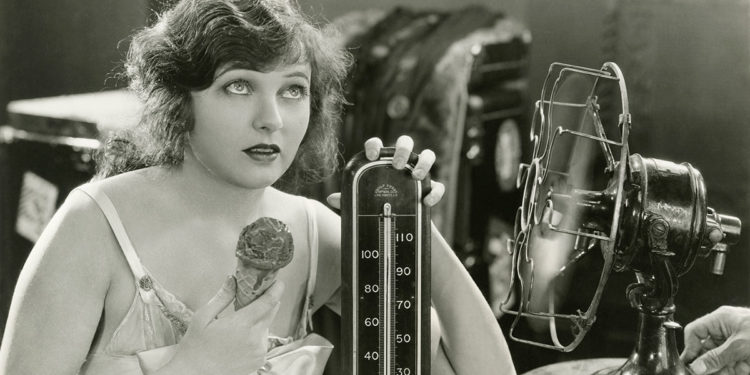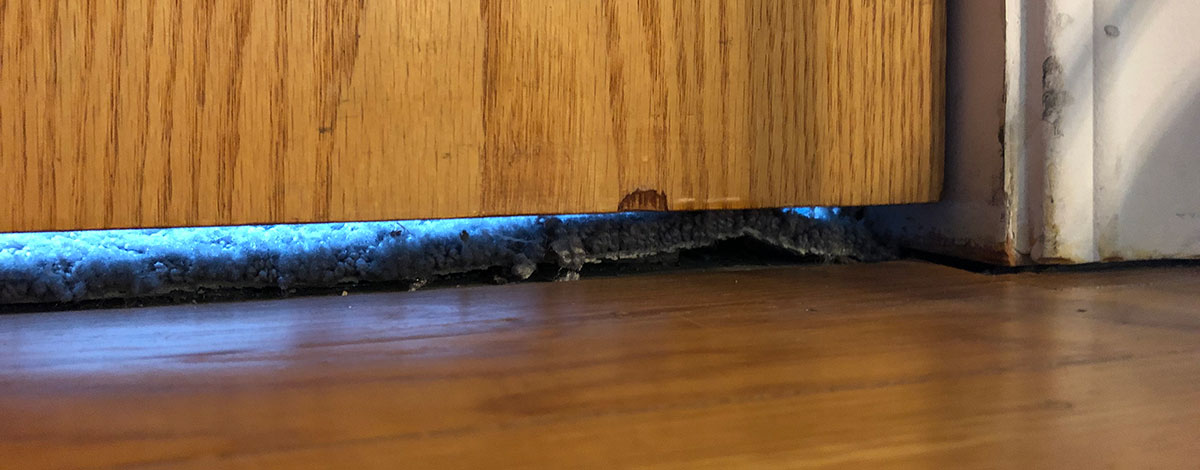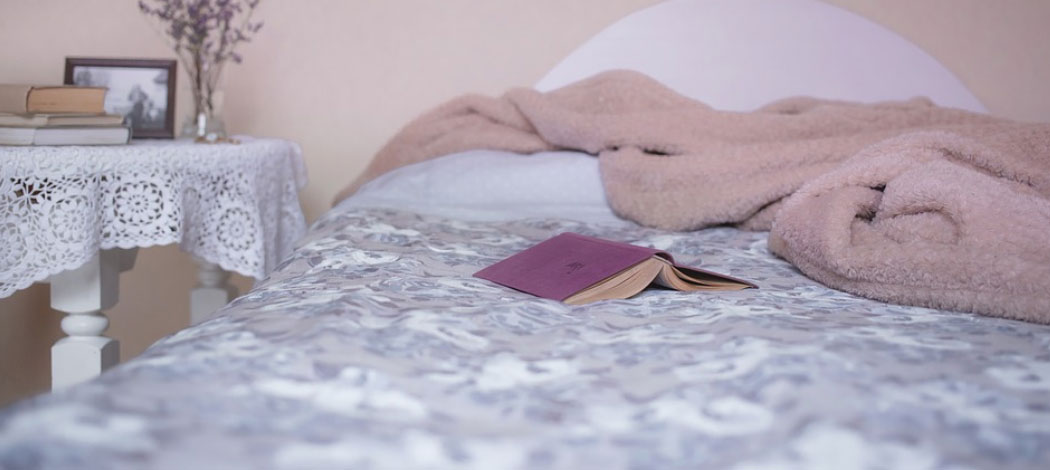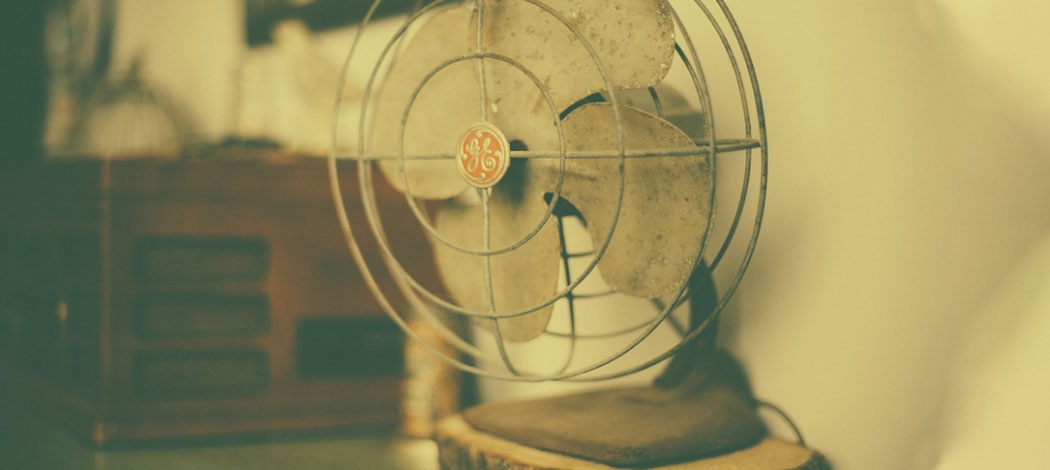
Summertime can be pretty hard without air conditioning. But we’ve got several tips to help keep your home cool during summer even without A/C. Alternatives to air conditioning can range from simple fans up to lifestyle choices to help you keep your house or apartment cool in summer without A/C.
10 Tips: How to keep a house or apartment cold during summer without air conditioning
Each of these tricks to keep a home cool in summer may be useful by themselves but you may get more mileage if you combine different techniques at the same time.
1. Close your blinds, shades or curtains
A tremendous amount of heat can enter an apartment or house through its windows in summer. By closing your blinds or curtains or shades in the morning before things get hot, and keeping them closed during the day until things cool off, you can typically lower the temperature in your house by several degrees. This is even a good cost-saving strategy for those with air conditioning because keeping your curtains closed will reduce the amount of work that your A/C unit has to do to keep the temperature cool.
Tip: If your curtains still let a lot of light in, or if your shades are not particularly light-proof, you may want to consider investing in lightproof blackout curtains or another way to make all your rooms aren’t letting light in.
2. Check your doors for maximum efficiency

Door air gaps like this one can let hot air in, or cold air out during summer.
Check your doors that open to the outside world to see if they are sealing properly to prevent heat from coming in. Consider adding a weatherproofing strip if the seal seems to be letting a lot of heat in, particularly at the bottom of the door where it meets the floor. Weather stripping will also help protect your home from cold in the wintertime too.
Tip: Closing doors to rooms that you don’t go into often can also help insulate your home from the summer heat.
3. Stay hydrated
Although this won’t lower the temperature in your apartment or house, staying hydrated is crucial in summertime – especially if your home lacks A/C.
4. Use seasonal bedding

Flannel sheets are appropriate for winter but smooth cotton or silk sheets can make sleeping much easier in summertime. Old or worn sheets can also be hotter in the summertime than newer ones. Be sure that you’re using the right kind of sheets for summer.
5. Spend more time on lower floors or in the basement
You’ve probably heard the expression that heat rises, and it’s true. If you have a two-story house, your upper level will be hotter than downstairs (and if you have an attic it’ll be quite hot compared to downstairs because heat rises and gets trapped up there). If you have a home with a basement, consider spending more time down there in summer because it’ll be several degrees cooler than the rest of your home.
If you live on the top floor of a three-story apartment building, you might not have ways to get away from the heat at home, but you can always spend more time outside your home in air-conditioned public places like libraries.
6. Use a window fan to suck hot air out
This may seem counterintuitive, but using a fan to suck air out the home and push it back into the world outside can help keep your home from getting too hot during summer. While positioning a fan to blow the hot air from outside into your home can actually heat up your apartment or house (even though it provides a breeze) it may not be as efficient as pushing the hot air out. You can also use a box fan or window fan to help suck air out a window.
Tip: Different homes are different and this may depend on factors like how much shade the window gets, so experimenting with both approaches is worth trying. Using a rectangular window fan unit with a reversible air direction switch will let you experiment with which direction to blow air. It can also let you easily suck in some cool air once the temperature drops at night.
7. Try to provide shade on your windows
If you live in a house, you may be able to plant trees or shrubs that will provide shade to your windows which can help cool your home without air conditioning during summer. Alternatively, some people install awnings on top of their windows to help shield them from sunlight from above (and thus heat).
8. Place an oscillating room fan in the corner of a room

Not every room has a ceiling fan, and installing one can be expensive and complicated, even if you own your own house. Using a rotating fan can help distribute the air in a room to create a breeze indoors. Modern oscillating fans have different modes and some even have remote controls that are miles better than the old fan you may remember from springtime classes in an elementary school that didn’t have air conditioning.
9. Open windows or doors on opposite sides of your home
In the days before air conditioning existed, it was common for farmhouses to be designed with a central corridor of windows or doors on opposite sides which could be opened to let air flow throughout the house to cool it down in summer. By opening two doors or windows (each on opposite sides of the home from the other), you can allow a breeze to run through your house or apartment.
This is also the “low tech air conditioning” method you may remember from road trips in a car without A/C as a child. Your parents may have opened one window in the front of the car and another window on the opposite side of the car in the back of the car to create a cross-breeze. Of course, it’s also possible that this can let more heat in and some houses aren’t designed with this summer cooling technique in mind.
Tip: Open your windows at night when the air is cooler to let in fresh air during the night, then close your windows during the day once it gets hot outside.
10. Get an air conditioning window unit or evaporative air cooler
Central air conditioning can cost $10,000-$20,000 or more to install in a house depending on whether the home has a duct system already exists for heating purposes. But installing a window-mounted air conditioning unit can be a less expensive and incredibly effect way at cooling a room or part of a home. Today’s window mounted A/C units can cost as little as a few hundred dollars.
Evaporative air coolers are not A/C units and they don’t have to be mounted in windows but they can mimic some of the refreshing cooling effects of air conditioning under some circumstances. They often have a water tank that you can fill with water or ice which then gets blown into the room similar to how cool breezes can form on the surface of a lake. Evaporative air coolers come in a range of sizes and shapes and some have wheels that can be moved from room to room to cool you while you’re sleeping or during the day in a living room area.
Frequently asked questions about cooling a home without air conditioning

Which direction should I run a ceiling fan to stay cool without air conditioning? Modern ceiling fans can run either forwards (counter-clockwise) as well as backwards (clockwise). In summertime when you want to push air down on yourself so you’re cooled. But in wintertime, you’ll want to run your fan backward which will suck hot air up as it rises, and push it down the walls to warm you again.
Are there certain appliances I shouldn’t use in summertime to make my home colder? One basic way for how to keep a house cool in summer is to hold off on running dryers or stoves and ovens until the sun goes down. Air drying your clothes on a rack can also avoid running the dryer entirely which can keep your home cooler in summertime. Ironing clothes may also contribute heat to your apartment or house, so it’s best to do that at night when it’s not as hot outside. Make sure you also turn off the lights in rooms you’re not using.
Any other tips to stay cool without A/C in the summer? Preparing cool foods will not only keep you from using the stove or oven, but it may also help make a hot summer bearable. Look for cool food recipes on websites like Food Gawker or invest in a summer cookbook. Grilling food outdoors can also eschew using your oven or stovetop so that’s another way to keep your home cool.
Related tips for keeping cool in summer:
How to Keep Your Rabbit Cool in Hot Weather
How to Keep a Chinchilla Cool in Hot Weather